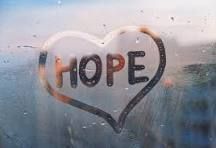
This can be a scary and challenging world sometimes. Do you want children to feel confident they can handle most conflicts and be good problem-solvers?
Do you want children to be able to think quickly and clearly in a crisis?
Do you want children to have healthy coping strategies when they are in stressful situations?
Raising resilient children requires us as caregivers to walk next to them, guide, encourage and teach. We all learn from those who make us feel safe. Think of your safe person. What do they do that makes you feel safe… they are patient and available, will listen and validate, help generate possible solutions when we are unable to. Children need these exact same things from us as caregivers. We learn from those who make us feel safe and secure. In order to teach children how to master the above questions we must believe in them and that they are capable of solving problems. We must STOP solving all of their problems too quickly and encourage them to think of solutions.
HOW DO WE DO THIS?
We ask questions, more specifically open-ended questions. There are two types of questions, closed and open. Closed questions are those that are answered with one word. What color is your car? What city do you live in? These questions do not require much thinking and can be answered quickly. Open ended questions are questions that have more than a one-word answer and require thought to answer.

What do you like about your job? What’s another way to do that? These open-ended questions, also called inquiries, help teach children to handle conflicts, solve problems, think quickly and create healthy problem solving. When children are encouraged to think about different ways to solve problems and know we believe in them to find an answer, then the magic happens.
I had the privilege of working with some children in a preschool classroom after they created an amazing town and car track for matchbox cars out of a large flattened appliance box. The road was drawn with crayons and other shapes to represent houses, stores and other buildings. There were paper towel tube trees attached and tissue paper grass. Very creative. A few boys were excitedly playing, “driving” the cars to school, home, the park then then of course… up the paper towel tube tree and down inside the tube. The boys quickly looked at me and said “uh oh” (the car was stuck inside the tube). I then replied, “wow, looks like you have a problem, what can you do to fix it?”. One of the boys tried to reach down inside, they quickly confirmed their hands were too big to fit. I then asked, “what might be another way”, thinking wheels turning the other boys’ eyes light up and he goes to get something. He comes back with a hand claw toy, (where you squeeze with your hand and on the other end about a foot away a pincer claw opens and closes) praising him for his thinking, he then tries…. and it also won’t fit. Giving them some more time, sitting there with them, thinking and trying their ideas …. until they talk with each other and decide to turn the cardboard over to let the car fall out. This worked! They did it! They solved the problem on their own with some guidance and reassurance that they are on the right track. Now I could have told them how to solve that problem when the car first went into the tube, but all the learning would’ve been lost. They were so proud of themselves, they learned at that moment that there are many ways to solve one problem and sometimes it works and sometimes not. They learned initiative and persistence, increasing their ability to be resilient.

Some great open-ended questions to ask that help generate problem solving thinking are;
- How do you think we can fix this?”
- “What could we do instead?”
- “Is there another way?”
- “How can we make this easier?”
- “What else could we do to get us there?”
- “What is a friendly way you could..?”
- “What are we going to do to make this work?”
- “How could we make this fun?”
Sometimes these questions become overwhelming when children are overwhelmed by emotions. When this occurs, we must consider how we can continue to support our children and teach problem solving skills. You can offer suggestions or even two acceptable choices. Children benefit from us helping them generate a list or menu of possible solutions. If after all attempts to help them problem-solve they become upset or are struggling to move on, you may need to work on labeling feelings and coping skills.
- This concludes C&A’s Larissa Haring’s series of blog posts on raising resilient children. Haring is C&A’s Early and Middle Childhood program manager. For more information on any of C&A’s services, please call 330-433-6075.
RECENT POSTS












